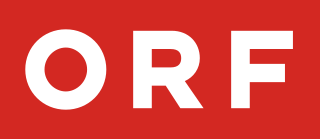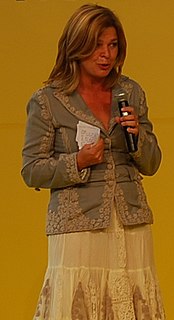Public broadcasting involves radio, television and other electronic-media outlets whose primary mission is public service. In many countries of the world, funding comes from governments, especially via annual fees charged on receivers. In the United States, public broadcasters may receive some funding from both federal and state sources, but generally most of their financial support comes from underwriting by foundations and businesses, along with audience contributions via pledge drives. The great majority operate as private not-for-profit corporations.
Canada has a well-developed media sector, but its cultural output – particularly in English films, television shows, and magazines – is often overshadowed by imports from the United States. Television, magazines, and newspapers are primarily for-profit corporations based on advertising, subscription, and other sales-related revenues. Nevertheless, both the television broadcasting and publications sectors require a number of government interventions to remain profitable, ranging from regulation that bars foreign companies in the broadcasting industry to tax laws that limit foreign competition in magazine advertising.
The media of Sweden has a long tradition going back to the 1766 law enacting freedom of the press.

Österreichischer Rundfunk is an Austrian national public service broadcaster. Funded from a combination of television licence fee revenue and limited on-air advertising, ORF is the dominant player in the Austrian broadcast media. Austria was the last country in continental Europe after Albania to allow nationwide private television broadcasting, although commercial TV channels from neighbouring Germany have been present in Austria on pay-TV and via terrestrial overspill since the 1980s.

ARD is a joint organisation of Germany's regional public-service broadcasters. It was founded in 1950 in West Germany to represent the common interests of the new, decentralised, post-war broadcasting services – in particular the introduction of a joint television network.

There are several different types of media in the United Kingdom: television, radio, newspapers, magazines and websites. The country also has a strong music industry. The United Kingdom has a diverse range of providers, the most prominent being the publicly owned public service broadcaster, the British Broadcasting Corporation (BBC). The BBC's largest competitors are ITV plc, which operates 13 of the 15 regional television broadcasters that make up the ITV Network, and American global media conglomerate Comcast, which owns the broadcaster Sky Ltd. Regional media is covered by local radio, television and print newspapers. Trinity Mirror operates 240 local and regional newspapers, as well as national newspapers such as the Daily Mirror and the Sunday Mirror.

Karin Resetarits is an Austrian journalist and politician. She was a Member of the European Parliament from 2004 until 2009.
Media in the Netherlands – television, radio, newspapers, magazines – are characterised by a tradition of politico-denominational segregation ("pillarisation") on the one hand and an increasing degree of commercialism on the other.
ORF 2 is an Austrian public television channel owned by ORF. It was launched on 11 September 1961 as a technical test programme. Today it is one of the four public TV channels in Austria.
The media of Greece refers to mass media outlets based in the Republic of Greece. Television, magazines, and newspapers are all operated by both state-owned and for-profit corporations which depend on advertising, subscription, and other sales-related revenues. The Constitution of Greece guarantees freedom of speech.
The media of Serbia refers to mass media outlets based in Serbia. Television, magazines, and newspapers are all operated by both state-owned and for-profit corporations which depend on advertising, subscription, and other sales-related revenues. The Constitution of Serbia guarantees freedom of speech.
The media industry of Iraq includes print, radio, television, and online services. In fact, Iraq became the first Arab country to broadcast from a TV station, in 1954. As of 2005 about 80 radio stations and 25 television stations were broadcasting to Iraq in Arabic, Kurdish, Turkmen, and Neo-Aramaic.
The media of Syria consists primarily of television, radio, Internet, film and print. The national language of Syria is Arabic but some publications and broadcasts are also available in English and French. While television is the most popular medium in Syria, the Internet has become a widely utilized vehicle to disseminate content. Transcending all available media, the government seeks to control what Syrians see by restricting coverage from outside sources. Publications and broadcasts are monitored by members of the government. Syria is ranked as one of the most dangerous places in the world for journalists. There were 28 journalists killed in combat in 2012.
Yemen's Ministry of Information influences the media through its control of printing presses, granting of newspaper subsidies, and ownership of the country’s only television and radio stations. Yemen has nine government-controlled, 50 independent, and 30 party-affiliated newspapers. There are approximately 90 magazines, 50 percent of which are private, 30 percent government-controlled, and 20 percent party-affiliated. The government controls the content of news broadcasts and edits coverage of televised parliamentary debates.

Snap legislative elections were held in Austria on 28 September 2008 to elect the 183 members of the National Council. The elections were caused by the withdrawal of the Austrian People's Party (ÖVP) from the governing grand coalition with the Social Democratic Party on 7 July 2008. Due to dissatisfaction with the grand coalition and the two main parties, it was widely expected to be a realigning election, with gains for the opposition and up to seven parties were expected to win seats.
Television in Austria was introduced in 1955. The country uses DVB-T for broadcasting. Analog television was completely shut down on June 7, 2011. Austrian television was monopolized by government-owned television stations until 1996. The first private television station in Austria is ATV.
Österreich 2 is the overall term used to refer the network of nine regional radio services provided by Austria's national public service broadcasting organization ORF.
The media in Belgium is characterized by its diversity due to the linguistic divide in the country.
Christian Lerch is a journalist and radio documentary producer based in Vienna, Austria and Berlin, Germany.






